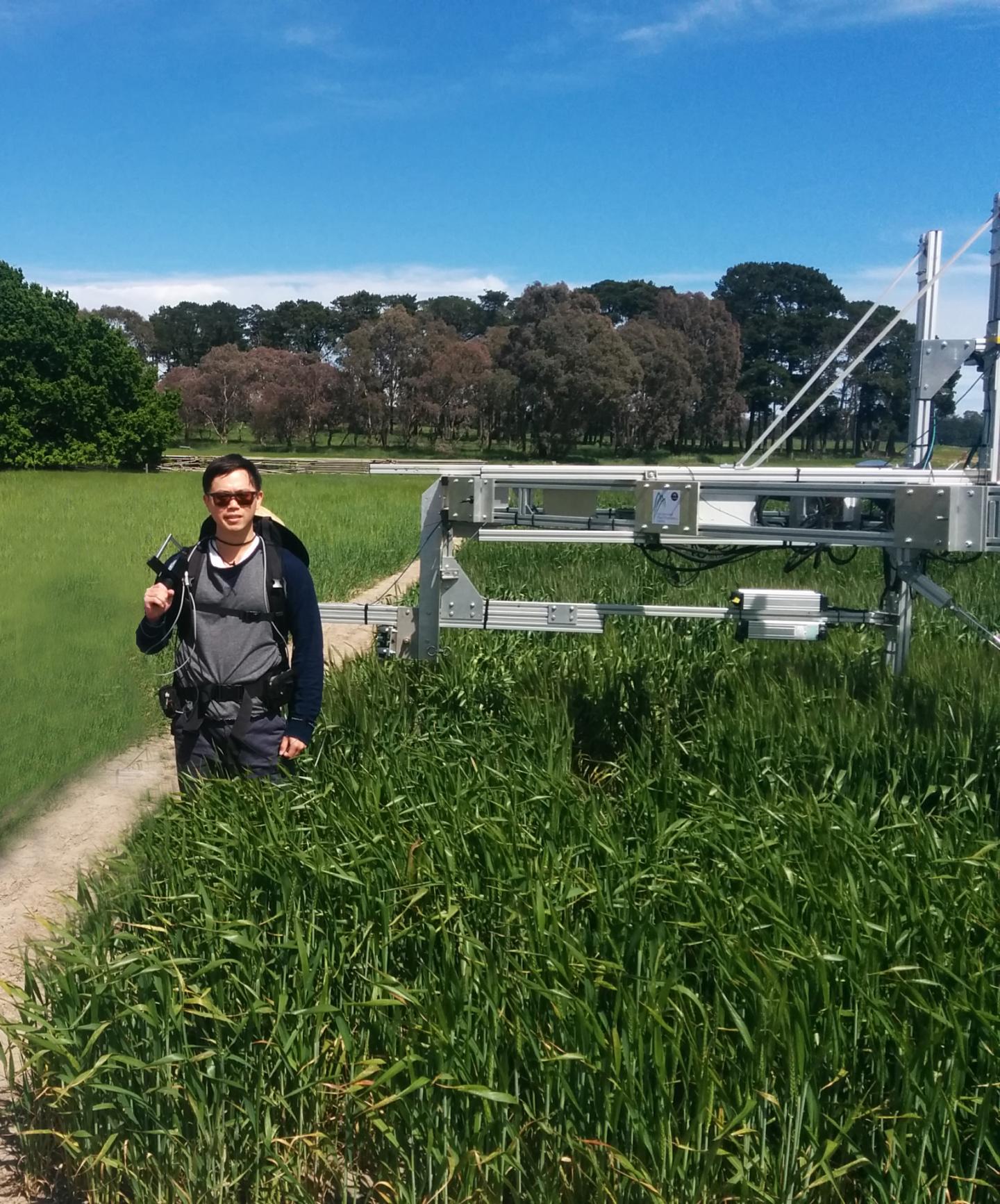
Credit: ARC Centre of Excellence for Translational Photosynthesis
In the next two decades, crop yields need to increase dramatically to feed the growing global population. Wouldn’t it be incredibly useful if we had a crystal ball to show us what are the best strategies available to increase crop yields?
A team of scientists have just developed exactly that: a dynamic model that predicts which photosynthetic manipulations to plants will boost the yields of wheat and sorghum crops.
“We have developed a reliable, biologically rigorous prediction tool that can quantify the yield gains associated with manipulating photosynthesis in realistic crop environments,” said Dr Alex Wu, from the ARC Centre of Excellence for Translational Photosynthesis (CoETP) and The University of Queensland (UQ).
Plants convert sunlight, carbon dioxide and water into food through photosynthesis and several studies have shown that this vital process can be engineered to be more efficient.
“Until now, it has been difficult to assess the impacts of these manipulations on crop yield. This prediction tool will help us to find new ways to improve the yields of food crops around the world.”
Dr Wu, the lead author of the paper published this week in the journal Nature Plants, said that this modelling tool has the capacity to link across biological scales from biochemistry in the leaf to the whole field crop over a growing season, by integrating photosynthesis and crop models.
“It is a powerful tool to assess and guide photosynthetic manipulations and unravel effects that confound the relationship between photosynthetic efficiency and crop performance, “he said.
Centre Deputy Director Professor Susanne von Caemmerer said one of the study’s most innovative aspects was using a cross-scale modelling approach to look at the interactions between photosynthesis and the pores of the leaf that allow the exchange of CO2 and water vapour.
“We know that it is not as simple as saying that improving photosynthesis will increase yield. The answer depends on the situation,” said Professor von Caemmerer, a researcher at The Australian National University (ANU) who is a co-author of the study.
“For example, we found that in crops like sorghum, more photosynthesis can actually decrease yield in water-limited cropping situations. The modelling predicts that we can manage this yield penalty if we can also maintain a stable rate of carbon dioxide entering, or water vapour exiting, the pores of a leaf.”
Co-author and Centre Chief Investigator Professor Graeme Hammer from UQ said this study fosters the type of transdisciplinary research needed for future crop improvement.
“It links research across the whole Centre, which has a main focus to increase the yield of major staple crops such as wheat, rice, sorghum and maize by enhancing photosynthesis.”
“Now that we have developed and tested this predictive model, our next step is to work closely with collaborators at the CoETP to design simulation scenarios that test the effects of other bioengineering and breeding trait targets,” Professor Hammer said.
One of those collaborators is ANU Professor Graham Farquhar, who co-authored the study.
“In this study we are scaling up to the whole crop growth season and incorporating the feedback effects on photosynthesis of resources for the crop, such as water, which is critical in predicting consequences on crop productivity in future Australian crop environments”, said Centre Chief Investigator Professor Farquhar from the ANU Research School of Biology.
The team investigated three main photosynthesis manipulation targets – enhancing the activity of the main photosynthetic enzyme, Rubisco; improving the capacity of the leaves to transport electrons; and improving the flow of carbon dioxide (CO2) through the internal layers of the leaf.
“This study permits us to quantify the consequences on crop yield for these three targets and their combinations for wheat and sorghum crops for irrigated or dryland cropping environments,” said Dr Wu.
The team found crop yield changes ranged from a reduction of one per cent to a 12 per cent increase, depending on the combination of photosynthetic targets, the crop and environmental conditions such as water availability.
###
This research is published in Nature Plants and was funded by the Australian Research Council (ARC) Centre of Excellence for Translational Photosynthesis at the Australian National University and The University of Queensland.
Media Contact
Dr Alex Wu
[email protected]
Related Journal Article
http://dx.




